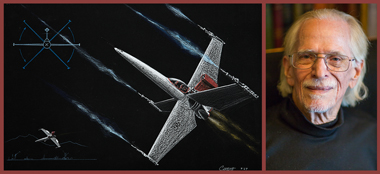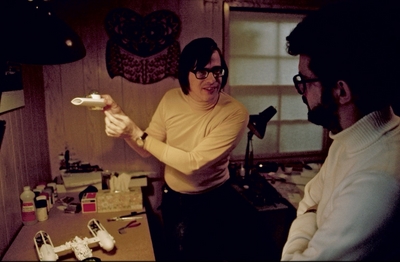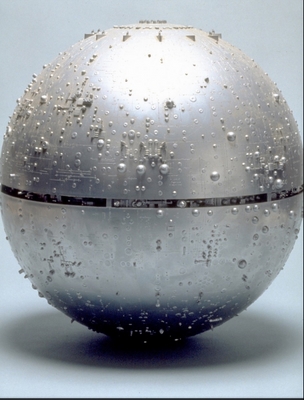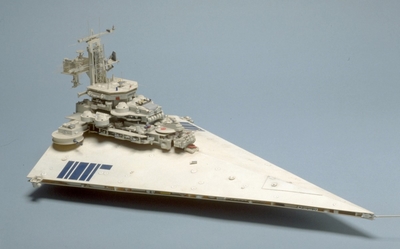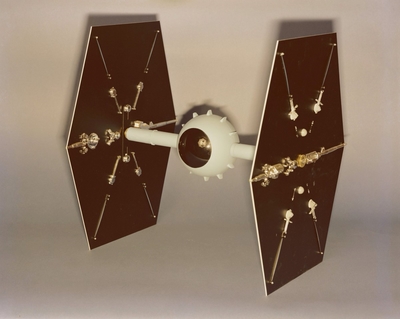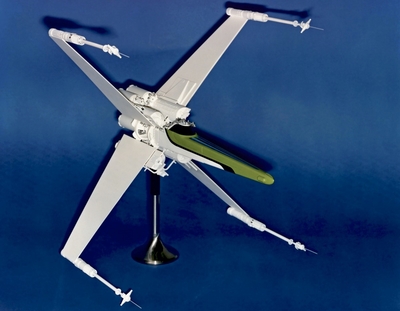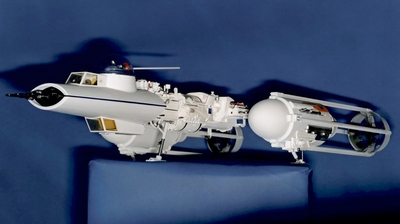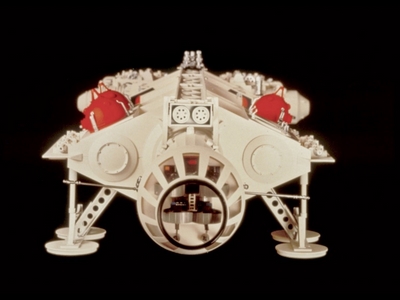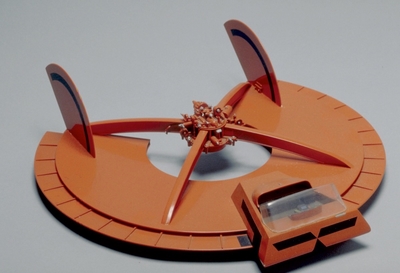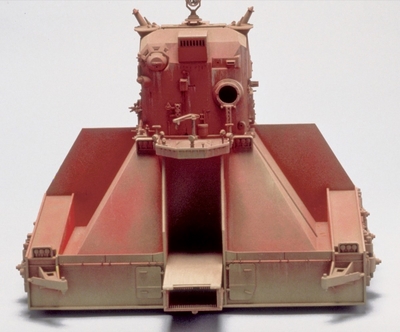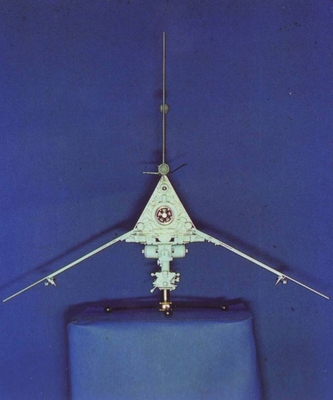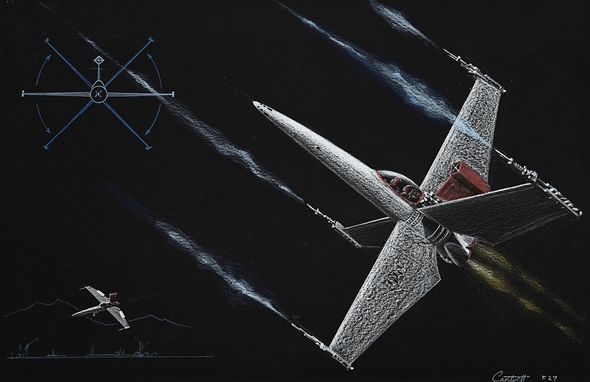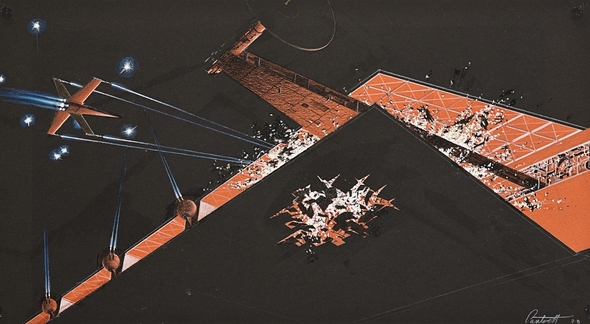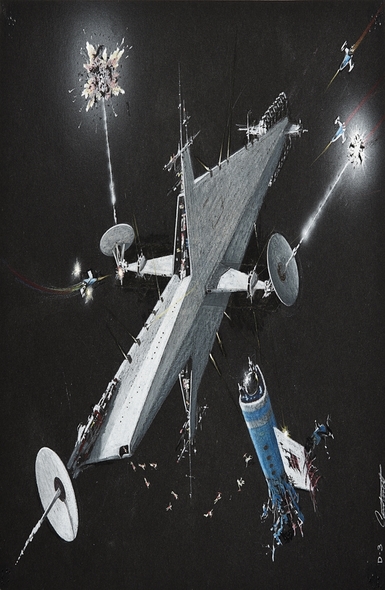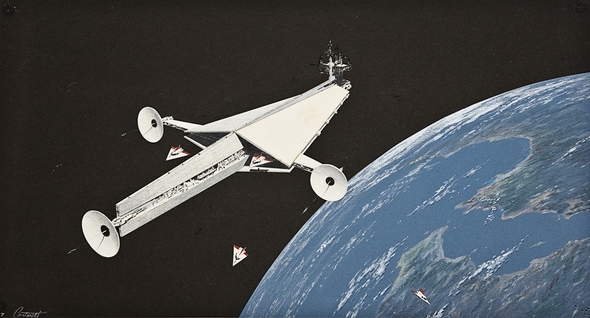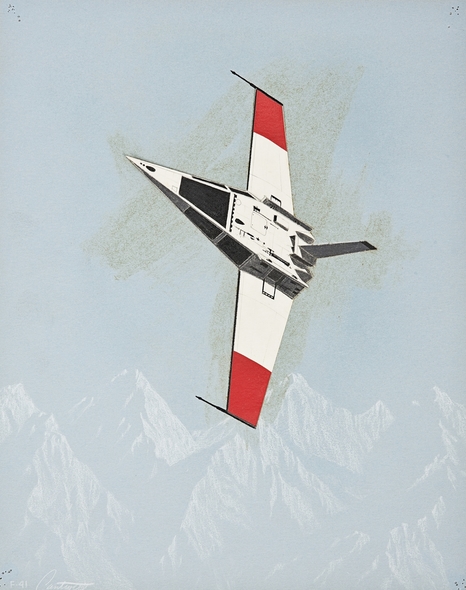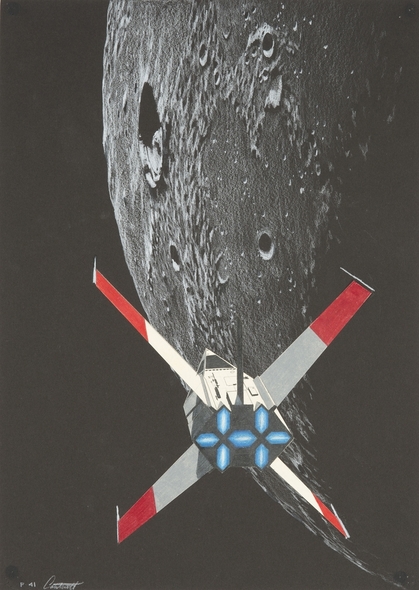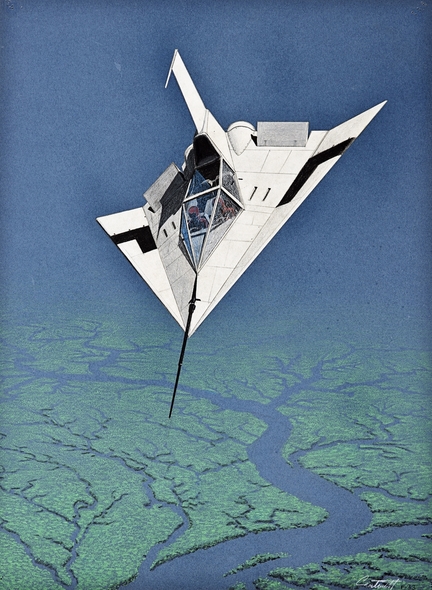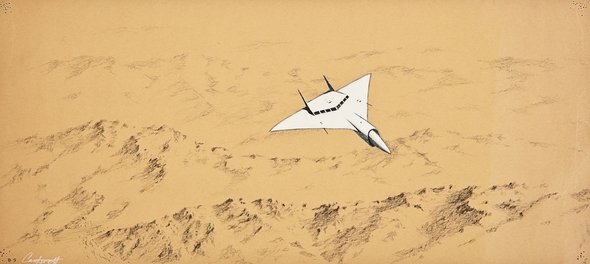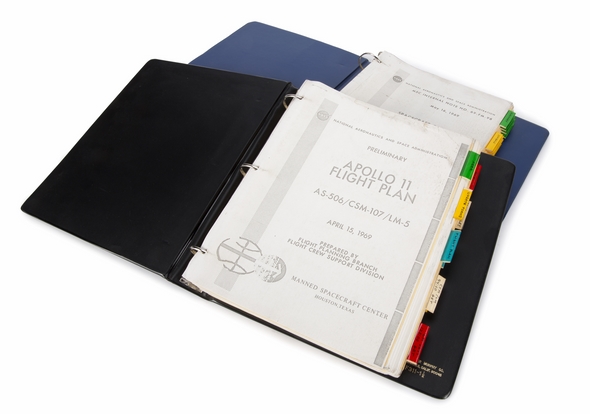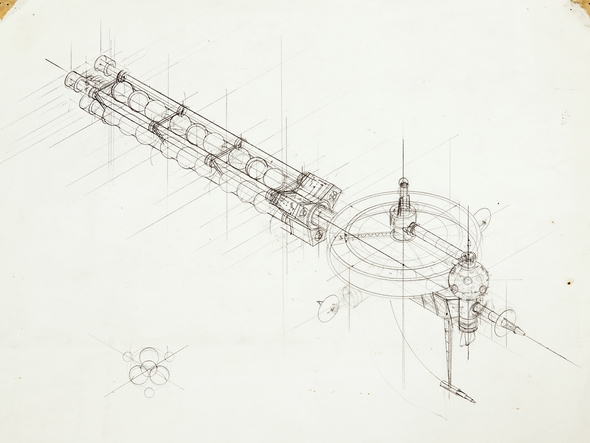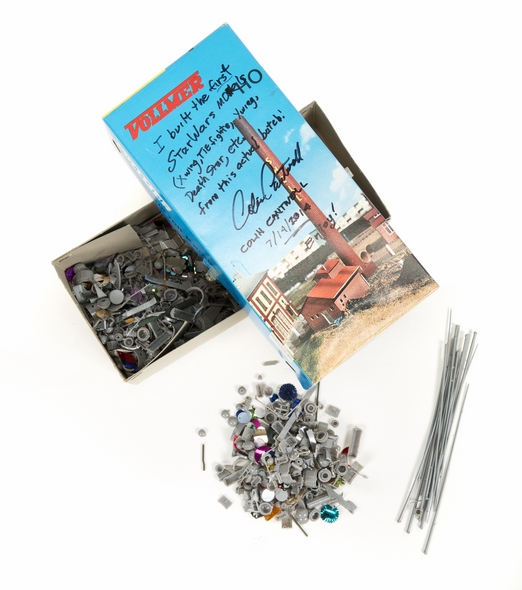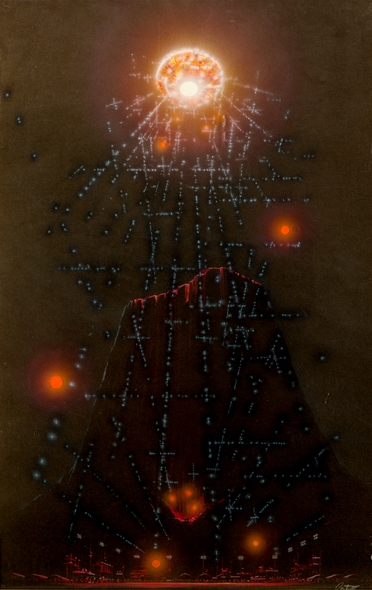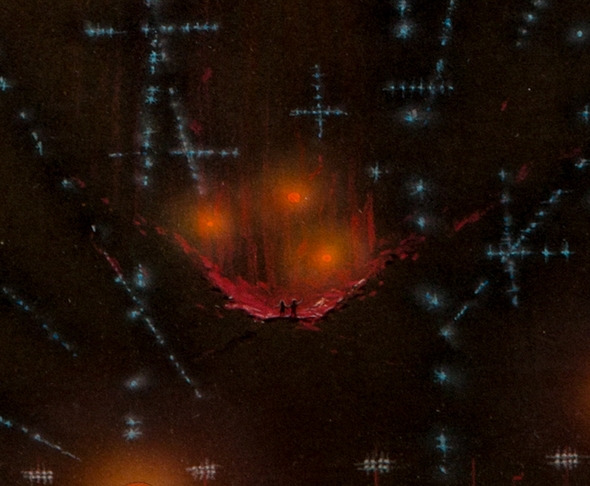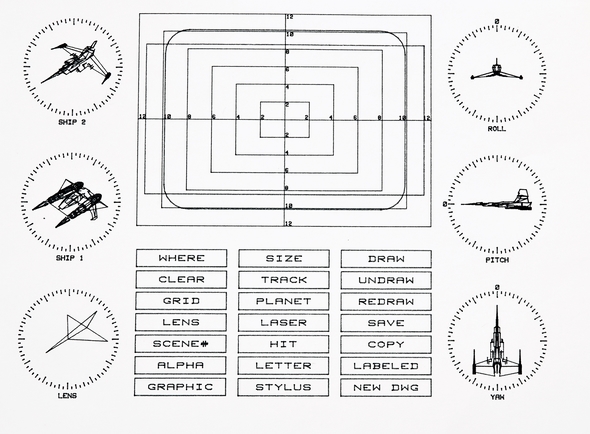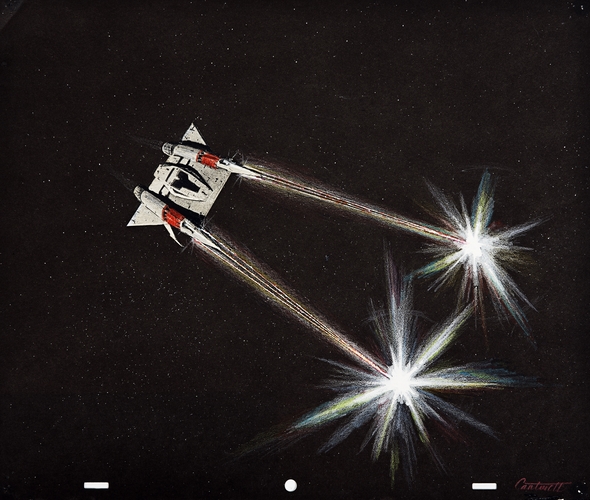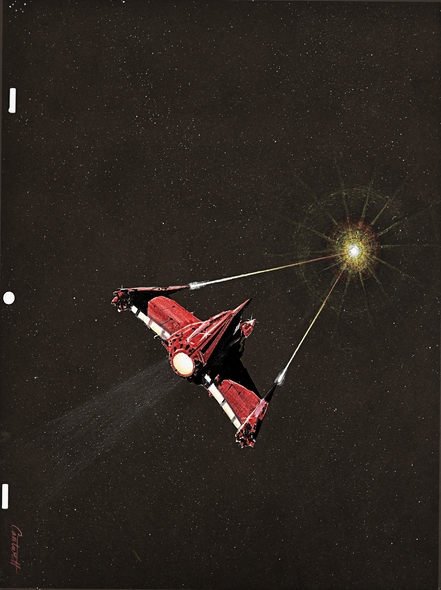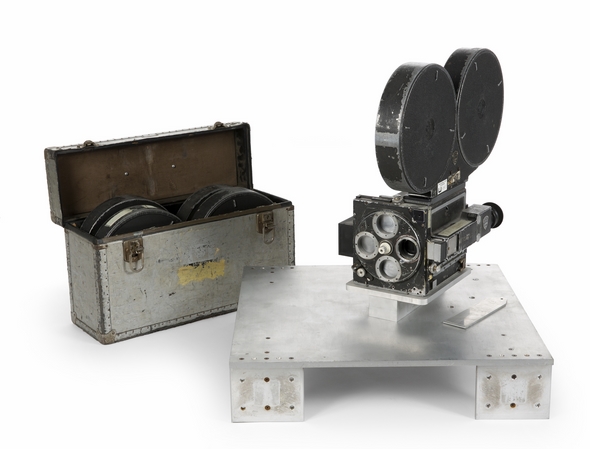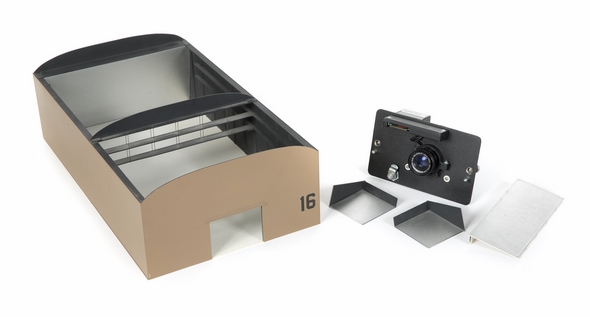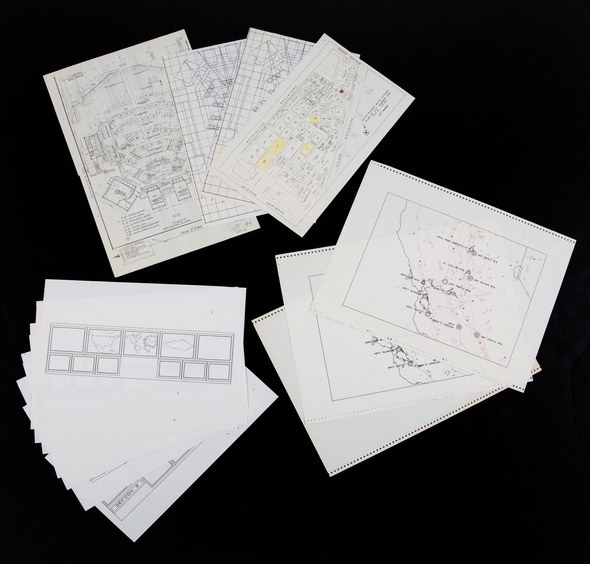Colin Cantwell is a dreamer. However, he’s is one of those rare individuals who is not content to merely dream, but to imagine how to make dreams a reality, and takes action to make things happen. And if the tool or method that he requires does not exist, he will invent it. He is about thinking up possibilities that others would find… impossible. He is also quite modest, regardless of his incredible accomplishments across a broad spectrum of disciplines. He seems to be entirely self-motivated and has an internal engine driving him to achieve the results that bring his dreams to life. My other observation, through my conversations with him at his home in Colorado some months ago, is that he is not only brilliant, but he is unrestrained by the divisions and categorizations that frame the lives of most of the rest of us. Like the great Leonardo da Vinci, Colin Cantwell is gifted with a great diversity of talents, as a scientist, inventor, artist, special and computer effects wizard, architect, engineer, and I’m sure a number of other abilities. In my opinion, he is one of our great national treasures that “we” didn’t know about. He played a significant role in Star Wars: A New Hope, 2001: A Space Odyssey, Close Encounters of the Third Kind, Omnimax/IMAX, Battlestar Galactica, Buck Rogers in the 25th Century, and WarGames, working with some of our greatest film auteurs like George Lucas, Stanley Kubrick, and Steven Spielberg. He worked with NASA and CBS on the Apollo XI moon landing mission. He even won over “the greatest architect of all-time”, Frank Lloyd Wright. And at 82 years of age, he continues to work on his life achievements; with his concept of Cosmic Biodesics, only now is the rest of the world catching up to his ideas.
MEDIA NOTICE: Please link back to this URL and credit Original Prop Blog as primary source of this story – thank you!
Early/Never Before Seen By The Public ’74/’75 Concept Art From Star Wars Is Further Down The Article
CLICK HERE For a PDF Excerpt of the Julien’s Auctions “Icons & Idols” Catalog Section Featuring The Colin Cantwell Collection
World Exclusive Interview with Colin Cantwell
With regards to my interviews with Mr. Cantwell, what is presented is (generally unedited) conversations that I had with him in his home back in August 2014. I did not really spend any time prepping the Q&A, and really wanted to more or less provide a platform for him to tell his stories in his own way. I have broken the interviews down into eight parts, by subject matter, as some may be of more interest to each individual; as well as for repeated viewings, to avoid having to search through one long video to find a certain topic.
PART 1: Childhood/Early Years, Education, UCLA & Animation Program, NASA Apollo XI Moon Landing with CBS & Walter Chronkite
PART 2: Working on 2001: A Space Odyssey with Stanley Kubrick; The Score & Special Effects
PART 3: The Original Scratch-Built Sci-Fi Models, Meeting George Lucas, Beginning Work on Star Wars, Origins of the Death Star Trench
PART 4: Talking About The Original Prototype Models for Star Wars, The Making of Star Wars
PART 5: The Original Concept Artwork for Star Wars: A New Hope Circa 1974/1975; Early Days of Star Wars Development and The Birth of ILM
PART 6: Working on Close Encounters of the Third Kind with Secret Special Effects Experiments; Battlestar Galactica and Buck Rogers
PART 7: Frank Lloyd Wright
PART 8: Working on WarGames at MGM Culver City, Creating and Shooting Special Effects for NORAD
Since I launched the Original Prop Blog in 2007, I have embarked on quite a journey into pop culture. I’ve handled all manner of original props and costumes from film and television, confronted individuals, companies, and actions that are detrimental to the preservation of pop culture artifacts, and written about many facets of pop culture, as it relates to this art market and otherwise. Being a huge fan of Star Wars, I’d have to say that maybe the most personally rewarding development came about with a phone call made on behalf of Colin Cantwell over the summer…
Months ago, I received an inquiry seeking help, trying to figure out what to do with some assets from WarGames, and that led to me ultimately flying out to Colorado to meet and interview Mr. Cantwell, who not only was one of the very first principals hired by George Lucas to work on the first Star Wars film (way back in 1974), but he has had one of the most interesting careers in modern times that I’ve ever learned about. Not only a witness to many historical moments, but one of the people who (quietly) helped to shape important events and works that have impacted people’s lives in a variety of ways.
It is with great honor that I get to present some of my experiences in talking with Mr. Cantwell, as we discussed his fascinating career.
I helped him consign much of his memorabilia (like his long lost – never before seen by the public – concept art for the original Star Wars film) to Julien’s Auctions and their upcoming Icons and Idols sale in early December.
More importantly, I am happy that this man – who has in many ways been lost to the public eye all these years, with many of his contributions not made part of our collective, recorded history – will get some very long overdo recognition for his many, many accomplishments.
Colin Cantwell – now 82 years old – has not done any contemporary and/or publicly available interviews about his work… And with my research, I’m not sure there are any publicly accessible records of interviews with him about his work in film, television, and science/history.
Below is a photo I took of Mr. Cantwell in August 2014:
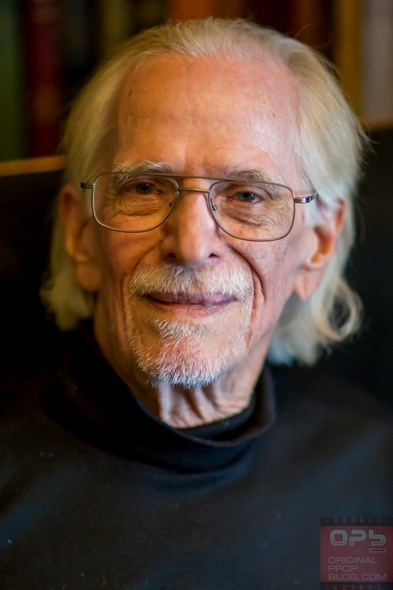
Below is a photo of Colin Cantwell with George Lucas working on his prototype models for Star Wars: A New Hope:
(from J.W. Rinzler’s The Making of Star Wars: The Definitive Story Behind the Original Film)
My opportunity to meet with Mr. Cantwell came about by way of his significant other, who reached out to me in August as a result of a story I did about a WarGames computer many years ago, which she came across via a Google search.
As it ends up, Colin Cantwell worked on WarGames back in the early 80s, tasked with making the NORAD set in Culver City convincing by using computers and innovative special effects techniques to make the screens in NORAD come to life, among other things. Funny enough, one of the very few substantive articles I found online about Colin Catwell was precisely about this work (see The HP 9845 Project).
In any event, with that initial phone call, “Colin Cantwell” sounded familiar, and as we talked about finding a new home for this collection of original WarGames memorabilia, I asked if Mr. Cantwell had any additional memorabilia, perhaps from his work on other films in Hollywood.
It was then that she mentioned in passing some Star Wars artwork from Episode IV: A New Hope, and I remembered why that name sounded so familiar… those amazing (and mysterious) prototype models from Star Wars!
Funny enough, I saw a few of these prototypes “in real life” back in 1995, when LucasFilm did their “Art of Star Wars” exhibit in San Francisco in 1995. Armed with a film camera (non-digital days) at the time, I took some photos, which I scanned and shared via an article here on the Original Prop Blog in 2009, including photos of Mr. Cantwell’s models for the X-Wing Fighter and the Tie Fighter and the Death Star.
Colin Cantwell famously made the first prototype models for George Lucas back in 1974/1975; the first realizations for the X-Wing Fighter, the Y-Wing Fighter, the Tie Fighter, the Star Destroyer, the Death Star, the Landspeeder, the Sandcrawler, and the Millennium Falcon, as well as the T-16 Skyhopper that Luke is seen playing with in the film (there are some incredible photos of the original in an album on Flickr from an official exhibition).
Obviously, these prototypes represent a fundamental contribution to the film and to the Star Wars universe at large (one of the most popular series of films and characters ever created for the big screen), and all done in the very earliest days of production. The brilliant Ralph McQuarrie based many of his own designs for the same ships and vehicles on Mr. Cantwell’s work.
Below are well-known images of those Colin Cantwell-created prop model prototypes that have been published in a number of official books about Star Wars:
I remember coming across the few photo resources concerning these models over the years in a few of the best books made about the franchise (The Making of Star Wars: The Definitive Story Behind the Original Film, Star Wars Chronicles, From Star Wars to Indiana Jones: The Best of the Lucasfilm Archives), and one of the thoughts to come to my mind was always, ‘Whatever happened to the maker? Whatever happened to Colin Cantwell?’ It was always one of the primary mysteries about Star Wars for me personally, and as a principal in the development of the original film at the earliest of stages, it is my understanding that Mr. Cantwell has been considered “lost” or “missing”.
I’ve often opined about how Star Wars: A New Hope was some kind of magical production, in which a number of artists with different gifts all came together to make this film not only “work”, but mark the beginning of a new era of film and filmmaking. Could Star Wars have become such a transcendent work without, say, the stunning soundtrack by John Williams? Or the groundbreaking special effects by the team of artists who founded ILM? Without the visionary imagery of Ralph McQuarrie? Lacking sculptors like Brian Muir and Liz Moore, make-up artists like Rick Baker and Stuart Freeborn, costumer John Mollo, or set decorator Roger Christian? Sans the soulful characters brought to life by Mark Hamill, Harrison Ford, Carrie Fisher, Sir Alec Guinness, Peter Cushing, Peter Mayhew, Anthony Daniels, Kenny Baker, David Prowse, and others? Without the voice of James Earl Jones? Without George Lucas? And on and on and on…
But there was always one piece that had since gone missing…
So it was quite a surreal moment, after all these years, to somehow have Colin Cantwell actually find me.
As I’ve often mentioned on this site, Star Wars is my all-time favorite film (and I have clear and detailed recollections from seeing it at the movie theater in 1977 at about four years old, as well as photos of meeting Darth Vader at Mervyn’s circa 1980). Collecting Star Wars was an obsession for me as a child and growing up, and it was the reason I became interested in this particular art market about twelve years ago – collecting original props, costumes, and other production material from film and television.
I was very excited to learn about Colin Cantwell, and assisting him with consigning his collection of memorabilia for sale with Julien’s Auctions in Beverly Hills.
For all its faults, one of the benefits of the collecting market for Hollywood memorabilia is that things that have values assigned to them are taken care of – the higher the value, the greater the likelihood that it will be preserved for future generations. And being sold at public auction will result in market prices being realized for Mr. Cantwell’s artifacts (which he has personally kept safe for many decades).
Of course, my hope would be that an institution designed to care for such material will buy everything as a collection, and make it somehow available for the public to see and enjoy. Paul Allen’s Science Fiction Museum and Hall of Fame. The Academy of Motion Picture Arts and Sciences’ Academy Museum. The Smithsonian. The Science Fiction Archives. Maybe most appropriately, The Lucas Museum of Narrative Art. In any event, it will be an opportunity for literally anyone to have a chance to own a piece of history.
There were a lot of valuable assets (in my mind: invaluable) in the Colin Cantwell collection, many of which were fragile, and others which were heavy and bulky and otherwise challenging to simply ship via a commercial carrier. So within days of being contacted, I found myself on a plane from Northern California to Colorado to meet Colin Cantwell in person, interview him for this article, help collect his memorabilia, and literally drive it all in a rented (and massive) SUV from Colorado to Beverly Hills, California (passing through New Mexico and Arizona en route). A Star Wars road trip, on the historic Route 66 no less!
Before I give a summary of highlights from Colin Cantwell’s work in and out of the entertainment industry, I would like to note that my objective was to spend as much time as possible with Mr. Cantwell on camera during my short visit, and only spent one afternoon with him; in addition to shooting hours of interview, my time was also occupied collecting his memorabilia and getting back on the road to meet deadlines. But I did manage to get well over two hours worth of interview on video. So while it might not be as high quality on a technical level as I would have liked, I prioritized gathering content over the quality of the camera work, audio, and what not as one individual doing it all. I would love to at some point produce and film a proper documentary on his life and work, which I found absolutely compelling even on a summary level.
All of the material from his collection will be sold by Julien’s Auctions in December – online and at their Beverly Hills showroom on December 5th and 6th – and you can find out all the details about that auction on their official website at www.juliensauctions.com:
CLICK HERE to download the Julien’s Auctions press release in PDF format.
CLICK HERE to download the Colin Cantwell portion of the auction catalog in PDF format.
More, as I advised Mr. Cantwell to retain the copyright on his rare and original Star Wars artwork – which predates the construction of his prototype models – plans are underway to possibly offer fine art prints of this work to the public. In either event, rest assured that archival quality scans of the work have been made to preserve the images as a part of Star Wars history. Please keep up to date on these plans here on the Original Prop Blog, where such efforts will be announced at a later date. If you would like to be added to a mailing list, please e-mail me at [email protected] with “Colin Cantwell Art Print Project” in the subject line.
Of all the wonderful material that Colin Cantwell saved and preserved over the years… the Star Wars artwork was the most compelling to me, since it was so unexpected and the film franchise is so close to my heart. Seeing the pieces of artwork that he created – before he even started work on the now famous prototype models – was astounding. Historic. It is important that this work become part of the permanent narrative about the making of the film and franchise.
Just when we imagine we know and have seen all there is to Star Wars… it is incredible (in a great way) to be proven wrong.
WORLD EXCLUSIVE NEVER BEFORE SEEN ’74/’75 CONCEPT ARTWORK FROM STAR WARS: A NEW HOPE
Below are the eight full color (fairly large) illustrations by Colin Cantwell that will be sold at public auction by Julien’s Auctions in early December 2014. These range in sizes from 9″ x 20″ to 13″ x 17″ to 11″ x 20″ to 10″ x 13″. They have a mixed media look as though they are acrylic and pastel, but were done in colored pencil.
Mr. Cantwell talks about seven of the eight images in my video interviews (the eighth was found after my visit). Of particular interest to me was that the ships and vessels in the artwork were in some cases drawn separately and added onto the backgrounds as cut outs (almost like paper animation cells), which underscores his studies and interest in animation, which he talks about in our interviews.
Following my visit, they found even more artwork – mostly black and white pencil sketches. These will be sold at auction as well, in sets (and will be offered as prints at a future date, along with the color images above). Below are just a handful of examples of this conceptual artwork and notes (there are over 40 pages, and most are double-sided with multiple images):
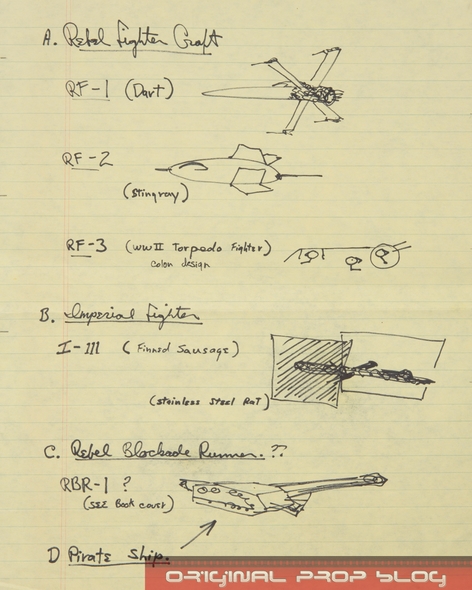
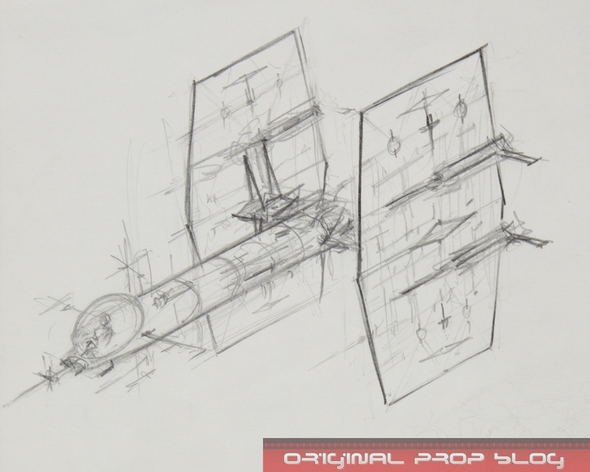
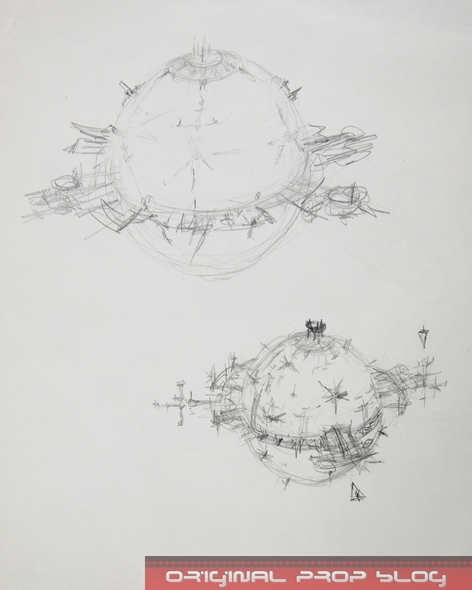
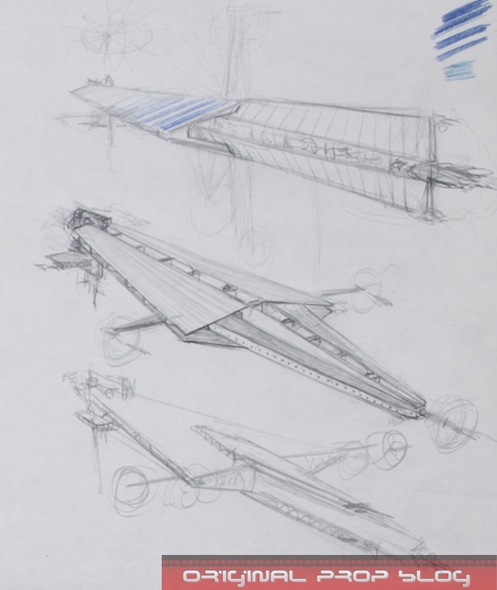
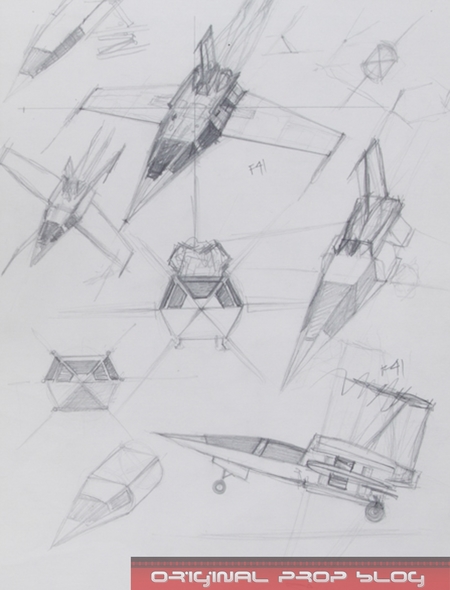
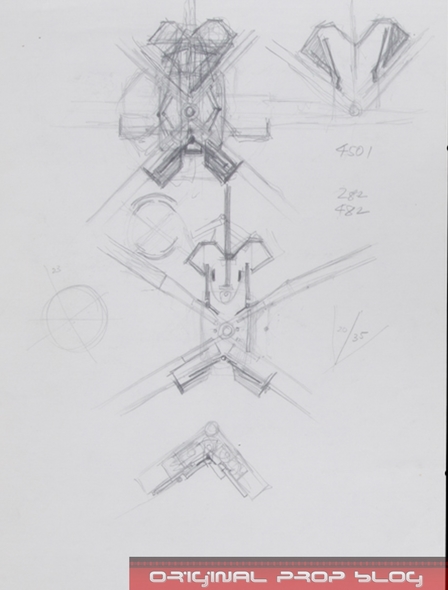
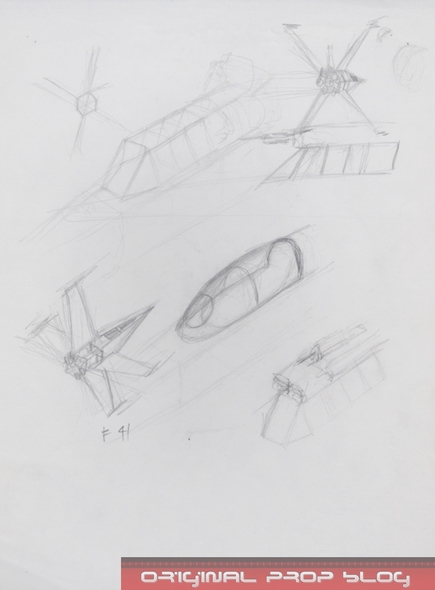
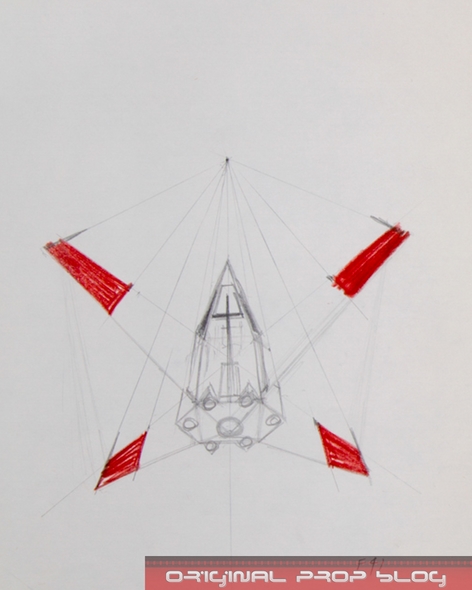
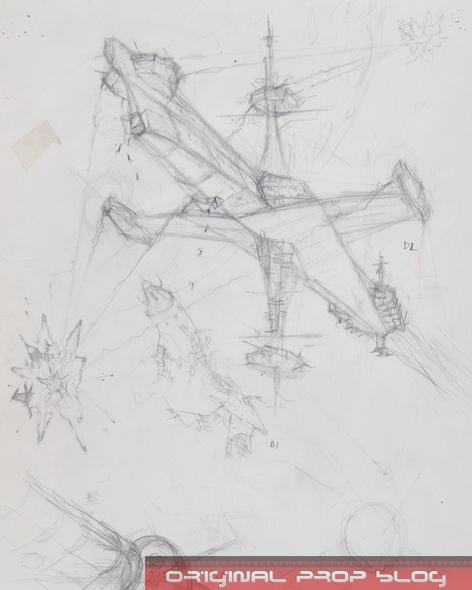
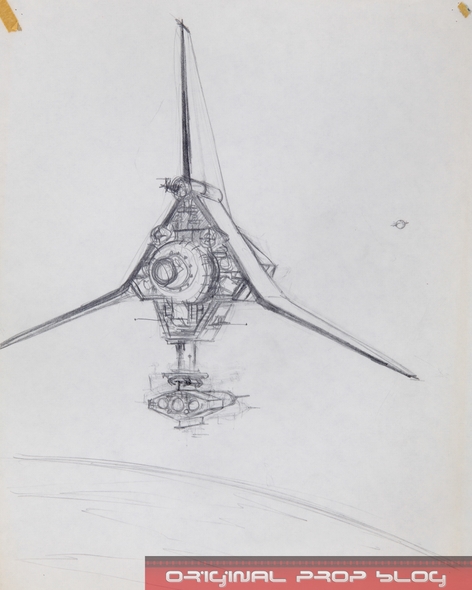
Collectively, the artwork is fascinating, as you can see both the birth and evolution of ideas and concepts, and also see some “what might have been” differences to the iconic ships and vehicles fans have come to know and love.
January 1975 Screenplay: Adventures of The Starkiller (Episode One) “The Star Wars” By George Lucas
One of the more interesting Star Wars pieces in his collection was the original screenplay issued to him for his work on the film in the earliest stages of production. Then titled, Adventures of the Starkiller (episode one) “The Star Wars” by George Lucas, this second draft of the script (dated January 28th, 1975) features artwork on the front cover that I’ve never seen before by an unidentified artist (Alex Tavoularis?), as well as a handwritten title page and “copy #4” noted as well. In my research, I could not find another example of this particular script in terms of the cover and title pages, nor could I find the cover image via Google Image Search, so that art is somewhat of a mystery… (unsure if it was produced specifically for George Lucas or if it was perhaps borrowed from an unrelated existing source to provide a visual for the script cover)
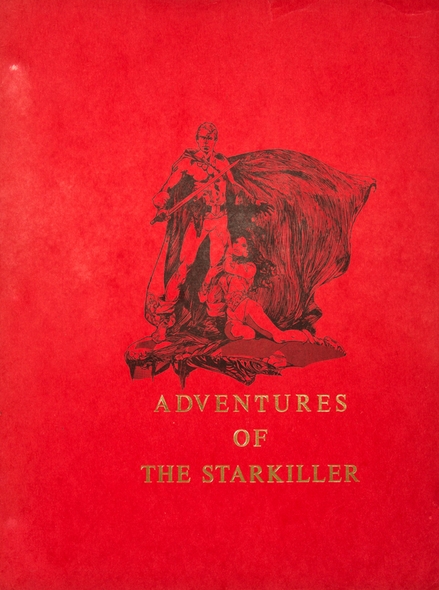
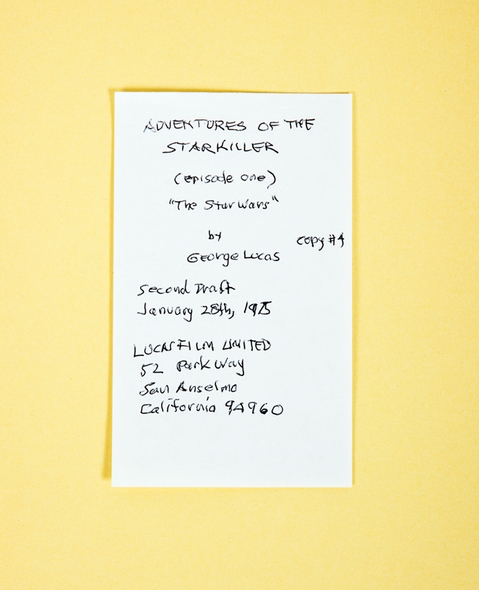
Colin Cantwell Biography
So a little more about Colin Cantwell, and his fascinating life…
Colin Cantwell, with many accomplishments in real world science as well as science fiction in film and television, was instrumental in advancing technology with cutting edge techniques and a unique vision for realizing the dreams of notable filmmaking auteurs.
Mr. Cantwell attended UCLA as an art and engineering major and became the first animation graduate from the University as a result of his suggestions to add such a major to their curriculum.
While at UCLA, Mr. Cantwell developed the concept of Cosmic Biodesics. He is still working on innovative developments in this area today, at 82 years of age.
Mr. Cantwell worked at Hewlett Packard where he designed 36 demos with interactive graphic applications and 5000 colors that took Hewlett Packard from green computer screens into the world of color computer graphics.
He subsequently worked as a public information liaison at NASA. This led to one of his most memorable and important experiences was in July of 1969. At that time, he was positioned behind Walter Cronkite in the CBS studio while Walter gave a blow-by-blow description of the first Apollo 11 landing on the moon. Mr. Cantwell was the “Hal 9000” computer that was feeding Walter the actual flight information that was broadcast live on TV during the moon landing.
A set of Apollo XI flight plans he used on set and in studio at CBS during Walter Chronkite’s historic moon landing broadcast
Mr. Cantwell traveled to England in 1968, where he worked on the classic Stanley Kubrick film, 2001: A Space Odyssey. During a midnight snack at Kubrick’s home, a frustrated Kubrick told Mr. Cantwell that he had replaced his fourth composer and still was not satisfied with the music. Mr. Cantwell then suggested that Kubrick go for a memorable opening with the music “Also sprach Zarthustra” by Richard Strauss. He also suggested the compositions of “Adagio” by Aram Kachaturian and “Atmospheres” by Gyorgy Ligeti. In addition, He designed the title scenes and managed the completion of the animation for the last three months of production on the film.
In 1973, at the Ruben H. Fleet Space Theater Planetarium, in San Diego, Colin Cantwell wrote, designed, and directed the first OMNIMAX spherical projection movie, Voyage to the Outer Planets. OMNIMAX is now known as IMAX.
An illustration by Colin Cantwell for his film, Voyage to the Outer Planets
Colin Cantwell’s most notable contribution to the film industry was working closely with George Lucas on the space ship designs for the original 1977 Star Wars film, Star Wars: A New Hope (now known as Episode IV). This includes the prototype models and designs of the X-Wing, Y-Wing, Tie Fighter, Star Destroyer, Death Star, Landspeeder, Sandcrawler, and Millennium Falcon, as well as the T-16 Skyhopper that Luke is seen playing with in the film. In addition, in pre-production discussions, he outlined his vision for some of the fighting scenes including the climactic battle scene at the Death Star and contributed the idea of there being a trench with a weakness that could be exploited by our heroes.
Leftover parts from the batch of 1960’s/early 70’s model kit parts used in the production of the original Star Wars: A New Hope prototype models
For Close Encounters of the Third Kind (1977), Mr. Cantwell presented Steven Spielberg with his vision of the first scene design of the hovering alien ship. Doug Trumball then became responsible for designing the scenes in the final movie.
Colin Cantwell pre-production artwork from Close Encounters of the Third Kind – Full Image
Colin Cantwell pre-production artwork from Close Encounters of the Third Kind – Close-Up Detail
Around 1979, Colin Cantwell developed a revolutionary new device called an interactive motion control system. This allowed animators to more easily simulate the movements of the spacecraft during the design phase of space battles in the Buck Rogers TV Series (1979-1981). Mr. Cantwell subsequently proposed the creation of the Universal’s Hartland special effects facility.
Buck Rogers in the 25th Century – illustration of the interactive motion control panel for special effects
Buck Rogers in the 25th Century – original production illustration by Colin Cantwell
Buck Rogers in the 25th Century – original production illustration by Colin Cantwell
In one of his last Hollywood projects, Colin Cantwell was asked to design the NORAD war room scenes for the movie WarGames (1983). The 12 giant War Room wall screens were programmed by Mr. Cantwell in a rush environment where each screen’s programming occurred the night before filming. These “large monitors” were, in fact, about 6×8 inch Hewlett Packard computer monitors that were enlarged for dramatic movie effects.
WarGames 35mm Mitchel Camera Corp Model NC with stepper motor, three film magazines, and custom mount
HP custom code writing green image display and modified HP 1336 A systems used to create NORAD effects in WarGames
Scale Model of Studio from WarGames
Production material from WarGames
I would like to extend very sincere and personal thanks to Colin and Sierra, for their generosity with their time and their trust. It was a real honor to meet Colin Cantwell, who has contributed so much and done so with dignity. Many who are supremely gifted in the sciences tend to have a proportional deficit in social interactions, but that was not the case with Mr. Cantwell. I found him to be very warm, engaging, and with the full gamut of emotions. One of the most gifted and authentic people I have met.
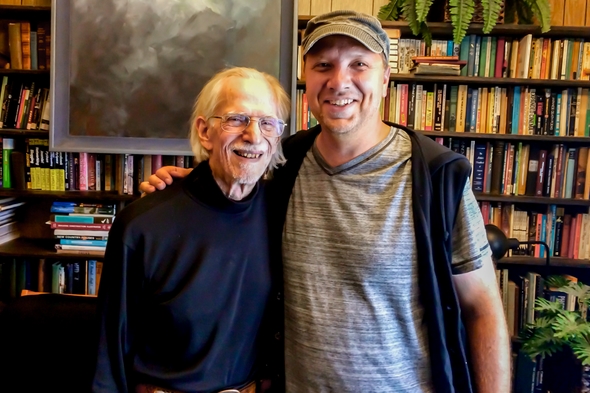
Jason DeBord

